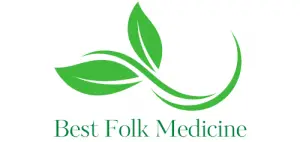In a concerning shift in global health, strokes are rising sharply among young adults. Medical experts recently noted they’ve “never had patients so young” facing severe strokes. According to the CDC, strokes have increased by 14.6% in adults aged 18–44 between 2020 and 2022 This article explores why strokes have become more common in younger age groups, pinpoints the underlying causes, and shares holistic approaches to prevention.
1. Strokes in Young Adults: Risk Factors
While strokes have historically affected older adults, younger people are increasingly developing the same risk factors:
- High blood pressure, high cholesterol, obesity, and type 2 diabetes—driven by poor diet and sedentary lifestyles—are now appearing years earlier in life .
- Physical inactivity and chronic stress, exacerbated by high-pressure work, long hours, and lack of movement, further amplify stroke risk .
According to Dr. Kharal from the Cleveland Clinic:
“We’re seeing premature atherosclerosis… risk factors like high blood pressure, high cholesterol and diabetes occurring now in younger patients in their late 20s into their early 30s.”
2. Nontraditional and Youth-Specific Contributors
In addition to traditional factors, several lesser-known contributors are emerging:
- Oral contraceptives and undetected heart defects like a patent foramen ovale (PFO) have been linked to embolic strokes in women in their 20s .
- Energy drinks and excessive caffeine use may trigger hypertension and arrhythmias .
- Prescription stimulants (e.g., Adderall) used long-term can worsen cardiovascular stress .
- Migraine with aura doubles the risk of ischemic stroke in young adults, especially women, particularly when combined with a PFO .
- Arterial dissections—tears in neck arteries caused by minor trauma or even sports—are a notable cause of stroke in otherwise healthy young people .
3. Environmental and Lifestyle Factors
Other increasing risk contributors among younger cohorts include:
- Air pollution (fine particulate matter PM2.5) has been shown to trigger both ischemic and hemorrhagic strokes.
- COVID-19-related inflammation may have long-term effects on cardiovascular health, increasing stroke risk even after recovery.
- High stress and poor sleep hygiene can elevate blood pressure and inflammation, compounding risk.
4. Recognizing Stroke Early: The “FAST” Acronym
Early identification and intervention can significantly improve recovery outcomes:
- Face drooping
- Arm weakness
- Speech difficulty
- Time to call emergency services
Dr. Kharal warns younger patients often dismiss symptoms, delaying critical treatment.
5. Holistic Prevention Strategies
A proactive, natural health approach can counter rising stroke risk:
A. Nutrition & Weight Management
- Follow a Mediterranean-style diet, rich in fruits, vegetables, whole grains, lean proteins, and healthy fats.
- Limit intake of processed foods, added sugars, sodium, and trans fats.
B. Physical Activity
- Aim for 150 minutes/week of moderate aerobic exercise (e.g., walking, cycling).
- Incorporate strength training twice weekly.
- Reduce sitting time—take standing or walking breaks during the day.
C. Stress Reduction
- Practice mindfulness techniques such as meditation, yoga, or tai chi.
- Establish healthy work-life balance habits.
D. Sleep Hygiene
- Prioritize 7–9 hours of sleep nightly.
- Practice consistent sleep routines and minimize screen exposure before bed.
E. Smart Caffeine and Substance Use
- Limit energy drink and caffeinated beverage intake; opt for moderate coffee or herbal teas.
- Avoid smoking and misuse of drugs like Adderall.
- Use oral contraceptives under medical supervision if other cardiovascular risks are present.
F. Regular Health Screenings
- Monitor blood pressure, cholesterol, glucose, BMI, and heart rhythm (ECG) regularly.
- For young migraine sufferers or those with heart issues (like PFO), consult a physician about risk evaluation.
These preventive steps can reduce up to 80% of stroke risk in young adults.
6. When to Get Professional Help
Seek immediate medical attention if you experience:
- Sudden facial weakness
- Arm or leg numbness on one side
- Slurred or unclear speech
- Severe headache with no known cause
- Unexplained dizziness, vision changes, or loss of coordination
Time is critical—stroke interventions like tPA must be administered quickly to prevent permanent damage.
7. Recovery and Rehabilitation
Young stroke survivors often benefit greatly from post-stroke rehab:
- Physical therapy for motor function recovery
- Occupational therapy for daily living activities
- Speech and language therapy for communication challenges
- Emotional support, counseling, or peer groups to cope with psychological stress
8. The Broader Takeaway
The upsurge in strokes among 20–40‑year-olds reflects a complex web of factors—from early-onset chronic diseases to modern lifestyle stresses and environmental exposures. As one physician noted, “something broader is going on”.
But here’s the hopeful truth: proactive, holistic strategies empower individuals to significantly reduce their stroke risk and thrive.
Sources:
nypost.com
uchealth.org
nyulangone.org
stamfordhealth.org
